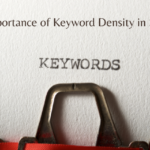Canonical URLs, also called “canonical tags,” are a way for webmasters to tell search engines which version of a webpage should be considered the authoritative or “canonical” version. This is especially helpful for websites with a lot of pages that have the same or duplicate content.

Canonical URLs
The “rel=canonical” tag, which is put in the head section of an HTML page’s code, is used to set a canonical URL. The tag should contain the URL of the page’s “canonical” version. For example, if a website has two pages with similar content, one at “example.com/page1” and the other at “example.com/page2,” the webmaster can tell search engines that “example.com/page1” is the canonical version by putting the following code in the head section of “example.com/page2”:
<link rel="canonical" href="http://example.com/page1">
This tells search engines that the content on “example.com/page1” should be used for indexing and ranking, and that “example.com/page2” is a duplicate of that content.
There are a few times when using canonical URLs may be a good idea:
- When a website has more than one page with the same or similar information, like product pages with different URLs but the same information about the product.
- When a website has both a “www” and a non-“www” version of its domain (e.g., “www.example.com” and “example.com”).
- When a website has different versions of its pages for phones and computers.
- When a website page has more than one way to sort or filter (like by price or popularity). When a website has pagination and the content is spread out over more than one page.
It is important to remember that using canonical tags does not guarantee that search engines will always use the specified URL as the canonical version. Search engines could still choose to index and rank other versions of the page if they think they are more relevant to a user’s search query. But by using canonical tags, webmasters can make it clear to search engines which version of the page they like best.
Let’s say a website has several pages with similar information, and the owner wants to make it clear which page is the one that should be used as the official version.
<!-- Page 1 -->
<html>
<head>
<title>Example Product</title>
</head>
<body>
<h1>Example Product</h1>
<p>This is an example product.</p>
</body>
</html>
<!-- Page 2 -->
<html>
<head>
<title>Example Product</title>
<link rel="canonical" href="http://example.com/page1">
</head>
<body>
<h1>Example Product</h1>
<p>This is an example product.</p>
</body>
</html>
In the example above, both pages have the same content and title, but the second page includes a “rel=canonical” tag that specifies that “http://example.com/page1” is the canonical version of the page. This tells search engines to use the content and information from “http://example.com/page1” for indexing and ranking purposes, instead of “http://example.com/page2”.





GIPHY App Key not set. Please check settings